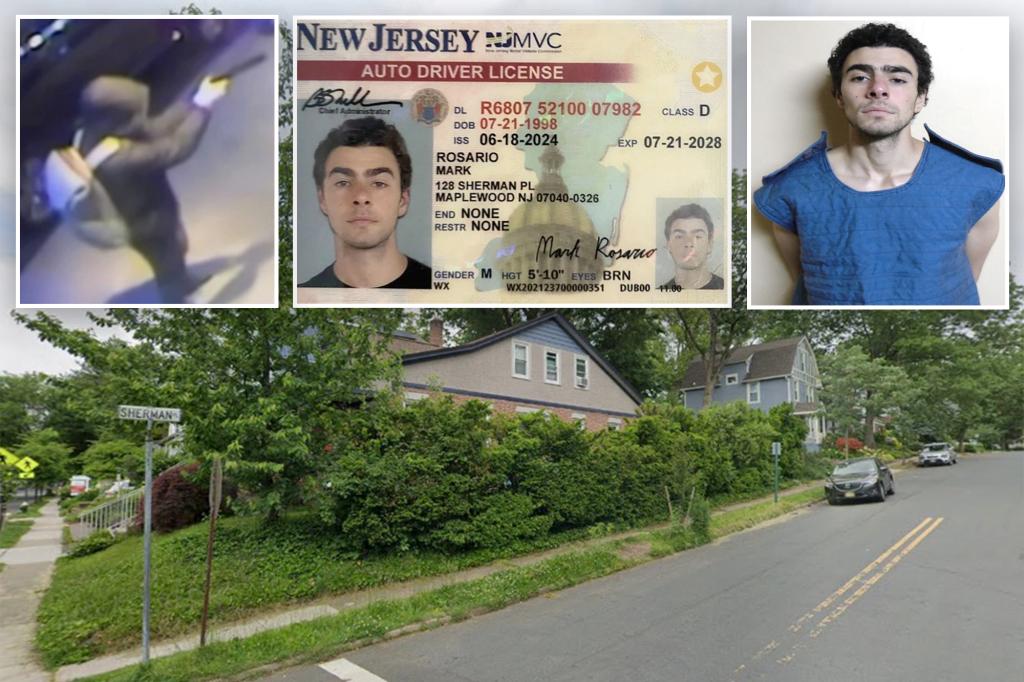The quiet, affluent town of Maplewood, New Jersey, found itself unexpectedly thrust into the national spotlight following the arrest of Luigi Mangione, a 26-year-old tech expert accused of assassinating a healthcare executive in Manhattan. The seemingly random connection between the alleged killer and this peaceful community stems from a fake ID Mangione possessed, listing a fictitious address on Sherman Place, a small residential street in Maplewood. While the address, 128 Sherman Place, doesn’t actually exist, its inclusion on the fraudulent identification has caused a stir among the street’s residents, who have been bombarded with inquiries from friends and family. The unexpected notoriety has sparked a mixture of bewilderment, amusement, and concern within the close-knit community.
The residents of Sherman Place, a street comprised of only about a dozen homes, have been left to speculate about why Mangione chose their street for his fabricated identity. The seemingly arbitrary nature of the selection has added to the air of mystery surrounding the case. While some residents have reacted with lighthearted humor, joking about the phantom address possibly belonging to a backyard treehouse, the underlying gravity of the situation, involving a murder and a nationwide manhunt, is not lost on them. The incident has also prompted reflection on broader societal issues, particularly the American healthcare system, which has been cited as a possible motive for the alleged crime.
The arrest of Mangione brought an end to an intense search that began after the fatal shooting of the healthcare executive outside a Manhattan hotel. Mangione, described as an anti-capitalist Ivy League graduate originally from Towson, Maryland, was apprehended at a McDonald’s in Altoona, Pennsylvania. At the time of his arrest, he was in possession of a homemade “ghost gun” equipped with a silencer, a US passport, multiple fake IDs, and a manifesto expressing his animosity towards what he termed “parasites.” Sources suggest Mangione’s hostility towards the medical community may have stemmed from personal experiences with a sick relative, though the details remain unclear.
The discovery of the manifesto, coupled with Mangione’s academic background and technical skills, paints a complex picture of a seemingly intelligent individual driven to extreme violence. While the specifics of his motivations remain under investigation, the contents of the manifesto suggest a deep-seated resentment towards certain individuals or groups, whom he perceived as deserving of his actions. The combination of intellectual capacity and violent tendencies raises troubling questions about the factors that can lead someone down such a destructive path.
For the residents of Sherman Place, the incident serves as a stark reminder of the interconnectedness of seemingly disparate worlds. Their quiet street, far removed from the high-stakes world of corporate healthcare and the complexities of political ideology, became inadvertently entangled in a tragic and disturbing narrative. While the fake address may have been a random detail in the larger scheme of events, it has brought the reality of violence and its ripple effects into their peaceful community. The incident underscores the unpredictable nature of life and the ways in which seemingly isolated events can resonate in unexpected places.
Beyond the immediate concern and curiosity generated by the fake address, the case has also prompted reflection on larger societal issues, particularly the state of the American healthcare system and the prevalence of gun violence. Some residents have expressed concern over the potential role of healthcare-related grievances in the alleged crime, highlighting the frustrations and anxieties that can arise from navigating a complex and often opaque system. Others have focused on the issue of gun control, lamenting the ease with which individuals can acquire firearms and the devastating consequences that can ensue. The incident serves as a microcosm of broader societal anxieties and the urgent need for addressing systemic problems that can contribute to acts of violence.










